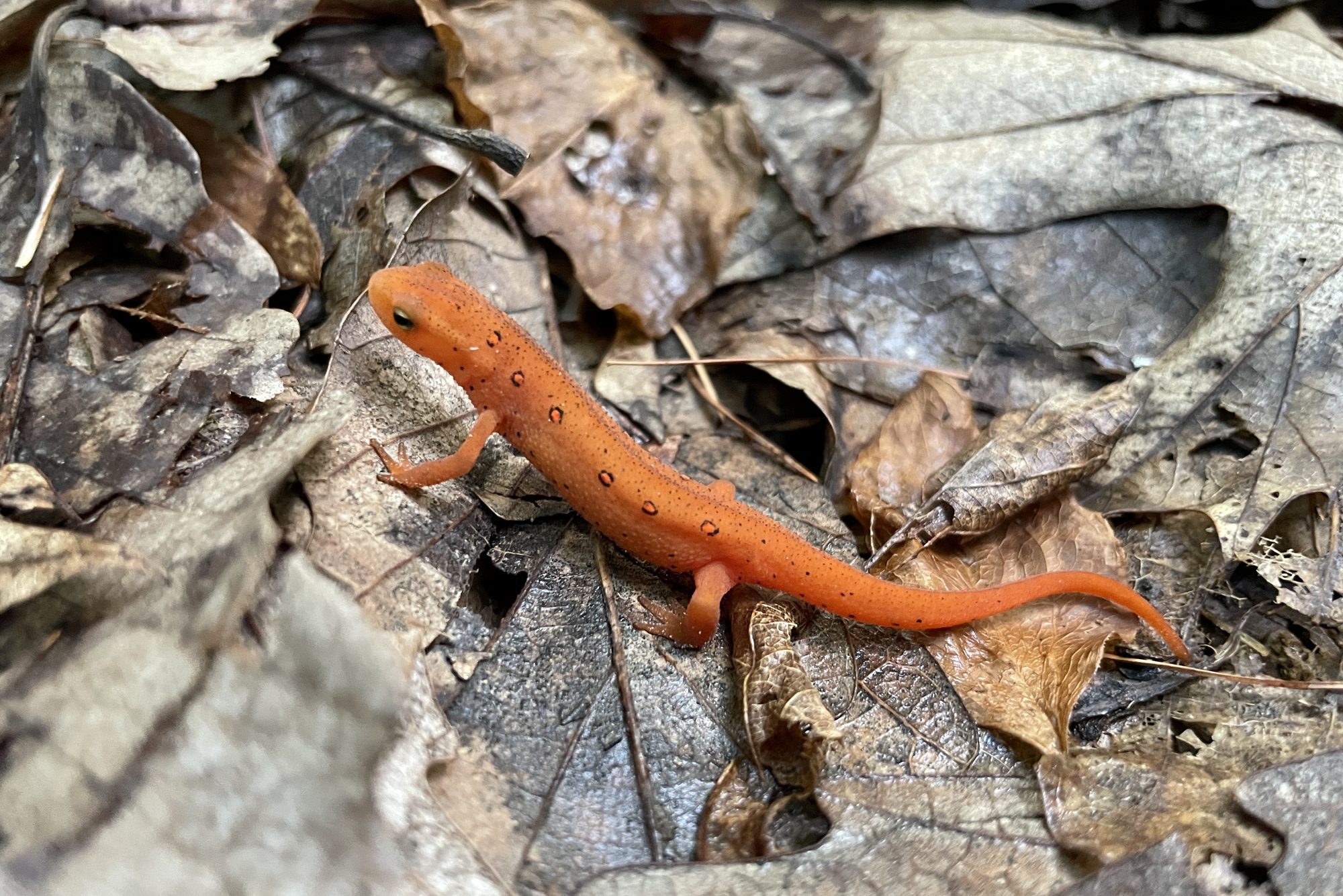Bright, slimy salamanders are beneficial and harmless. But, you don't want a salamander invasion in your basement. Keep them outside with these tips.

How To Keep Salamanders Out of Your House

Salamanders hold a mythical place in human history. Long associated with fire, salamanders show up in writings from Aristotle to Ray Bradbury, who used a salamander motif for his firefighter protagonist in Fahrenheit 451.
Why fire? Imagine an ancient traveler, stopping in the woods to build a fire for the night. Salamanders live in dead logs and forest debris, and if their home gets tossed into a fire, they’ll run. An early fire-builder might conclude salamanders “came from” the fire, or were fireproof.
Do you have salamanders in your neighborhood? Luckily, if left alone they’re harmless, says Kent Hering of Solutions Pest and Lawn. But there are things you can do to keep them outside where they belong.
On This Page
What Are Salamanders?
Salamanders are amphibians that mostly live near or in water. As ectotherms — i.e. cold-blooded — they cannot regulate their temperature like humans and other mammals. Salamanders rely on their environment for warmth.
All have porous skin. Depending on the species, some breathe through their skin, others through gills, lungs or a combination of respiration mechanisms. They’re often slimy due to the mucous they secrete, which keeps their skin moist and regulates their temperature.
Salamanders can regenerate their limbs and tails, a useful trait for evading predators if captured.
What Do Salamanders Look Like?
Salamanders resemble lizards, but as amphibians are more closely related to frogs and toads. Salamanders are small, usually less than six inches long, and with few exceptions have four legs. They all have tails, too — their scientific group is Caudata, Latin for “tail.”
Salamanders generally offer a stubbier profile than lizards. Their legs are shorter, and their bellies drag on the ground compared to thinner, taller lizards. Salamanders can be colorful — many are spotted, striped or otherwise showy, which tells predators to back off.
Where Are Salamanders Found?
The Southeastern U.S. features the greatest diversity of salamanders in the world, according to the North Carolina Wildlife Resources Commission. Fifty-six species call North Carolina home. Salamanders live all over the world, usually near water or in damp environments.
Some salamanders need water more than others. Sirens live entirely in the water. Newts are semiaquatic — they live partially on land but move to the water part of the year to reproduce. Tiger salamanders and other more terrestrial species live nearly their entire adult lives on land, although they too return to water to breed.
Are Salamanders Destructive?
No. Salamanders are quiet and often nocturnal. Most of the time you’ll never even know they are nearby, except that you’ll probably notice fewer pests, like slugs, snails and mosquitoes.
Salamanders, like most amphibians, are excellent indicators of ecosystem health. That’s because their permeable skin is vulnerable to environmental changes. A healthy population of salamanders means the area, whether a stream, vernal pool or forest floor, is in good overall shape.
Do Salamanders Bite?
Yes, but it’s unlikely. Salamanders have teeth, but they’re generally shy and avoid humans. People who keep them as pets might tell a different story, but getting bit by a wild salamander would be a real feat.
Never pick up, harass or provoke a salamander; some excrete poisons from their skin to deter predators. Tetrodotoxin, the chemical produced by newts and other salamanders, is the same poison found in puffer fish, which have famously caused several deaths.
How To Get Rid of Salamanders
If salamanders aren’t pests, leave them alone.
Hering says there’s no chemical way to get rid of salamanders. “Controlling insects in the lawn should help reduce salamander populations,” he adds. If food is scarce, salamanders will be too.
If salamanders infiltrate your home, Hering says glue traps can “mitigate a regular influx.” But it’s important to change outdoor conditions with the tips below first. Salamander populations are in trouble, and killing them should be a last resort.
Clean up rotting logs and debris
Logs and leaf litter are prime salamander habitat. Cleaning up wood debris around your home’s foundation deters salamanders and the bugs they eat. Bonus: You don’t want those bugs in your house, either. Keep vegetation trimmed to keep moist, shady areas to a minimum.
Get rid of standing water
Salamanders eat mosquito larvae, and nothing loves standing water like a mosquito. Level your yard to eliminate depressions that hold water, and check the drainage around your foundation. Make sure soil slopes away from the foundation.
Seal cracks in your home
Salamanders may have come into your home in search of a cool, damp basement or crawlspace. Seal any exterior cracks, and make sure entrances to crawlspaces and basements close tightly.
Keep these areas clean and free of salamander food (bugs). Reduce moisture in basements using fans or improved ventilation.
Relocate salamanders
Gently scoop or coax them into a box. Don’t grab them or squeeze them — remember, they have toxins on their skin, and you can harm them with the salts and chemicals from your body. Deposit salamanders near a pond or on a damp, shaded forest floor.
Wash your hands thoroughly after handling a salamander, or wear gloves.




















